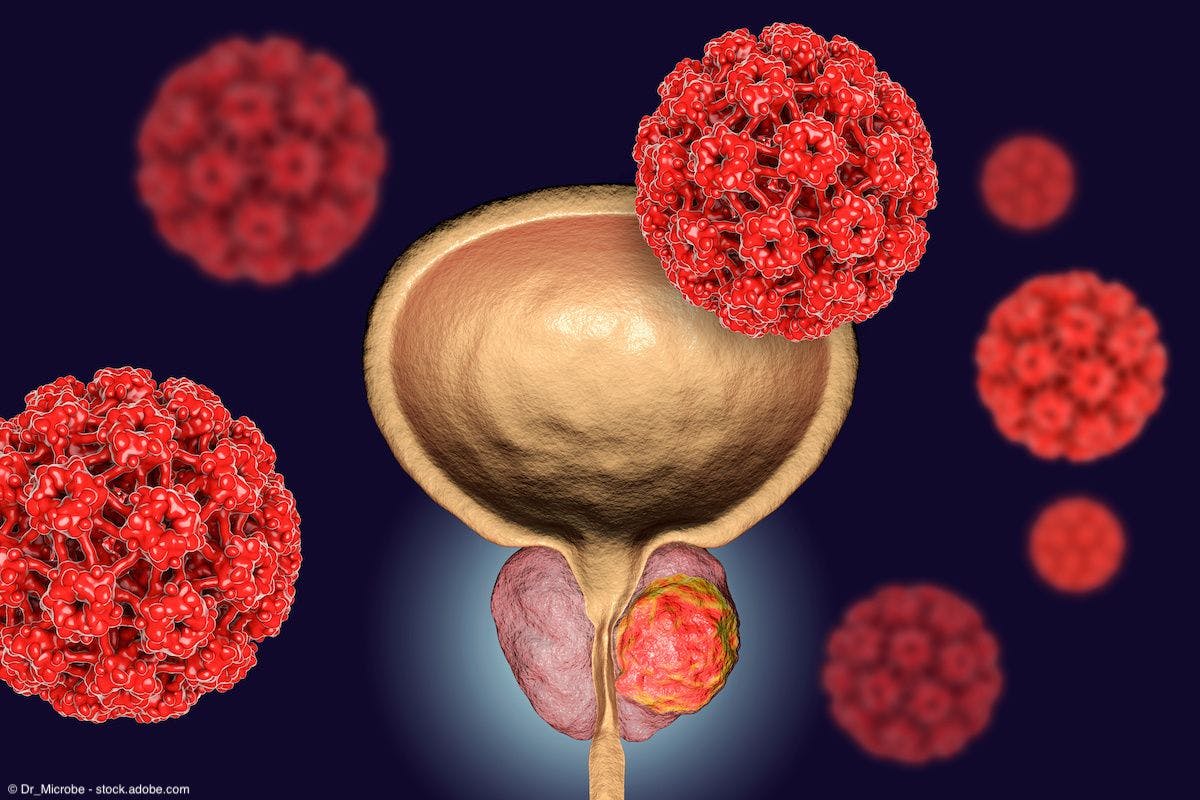News
Article
Urology Times Journal
Extended lymphadenectomy provides no benefit over standard lymphadenectomy in MIBC
Author(s):
“Both the SWOG S1011 and the LEA trial show very clearly that a bilateral standard node dissection confined to the true pelvis is the standard of care for patients with curable muscle-invasive bladder cancer," says Seth P. Lerner, MD, FACS.
Findings from the phase 3 SWOG S1011 trial (NCT01224665) showed that extended lymphadenectomy at the time of radical cystectomy provided no significant improvement in disease-free survival (DFS) or overall survival (OS) compared with standard lymphadenectomy for patients with muscle-invasive bladder cancer.1,2
In total, 618 patients were intraoperatively randomized to extended (n = 292) or standard (n = 300) lymphadenectomy across 27 sites in the United States and Canada.

The findings were presented by lead author Seth P. Lerner, MD, FACS, at the 2023 ASCO Annual Meeting in Chicago, Illinois.
“The primary objective of SWOG S1011 was to compare the disease-free survival in patients undergoing radical cystectomy, predominant urothelial, in extended node dissection plus standard vs standard alone. We define DFS as first documentation of relapse or recurrence or death due to any cause,” said Lerner during the presentation.Lerner is a professor of urology at Baylor College of Medicine in Houston, Texas.
In total, 618 patients were intraoperatively randomized to extended (n = 292) or standard (n = 300) lymphadenectomy across 27 sites in the United States and Canada. The median age of participants was 69.
Patients in the study had T2 to T4 disease, predominant urothelial, with the majority of patients presenting with T2 disease within both cohorts. Patients were recommended to receive adjuvant chemotherapy if they had locally advanced disease.
Lerner added, “If you had neoadjuvant chemotherapy, you needed to complete it 70 days prior to registration. And if you didn't, you had to undergo cystectomy within 4 weeks of registration.”
Median follow-up was 6.1 years for patients in both cohorts. Patients who underwent extended lymphadenectomy had a higher lymph node yield (41) compared with those who underwent standard lymphadenectomy (25). However, there was no significant difference in node metastasis between the arms, with a rate of 26% among patients receiving extended lymphadenectomy compared with 24% among patients receiving standard lymphadenectomy.
Overall, the data showed no significant difference in DFS for patients who underwent extended lymphadenectomy compared with patients who underwent standard lymphadenectomy (HR 1.10; 95% CI 0.87, 1.42, P = .40). OS among both cohorts was also found to be similar (HR 1.15 95% CI 0.89, 1.48, P = .29).
Grade 3/4 adverse events (AEs) were experienced by 16% of patients receiving extended lymphadenectomy compared with 8% receiving standard lymphadenectomy. Within 90 days of the procedure, 49% of patients who underwent extended lymphadenectomy experienced grade 3/4 AEs, compared with 42% of those who underwent standard. The most common AE in both arms was anemia, with the majority of cases being grade 3. Other AEs included urinary tract infection, sepsis, and ileus.
Patients who underwent extended lymphadenectomy had a 90-day mortality rate of 6.5% (19 patients), compared with 2.4% (7 patients) among those who underwent standard lymphadenectomy.
Lerner concluded, “The take-home message is that both the SWOG S1011 and the LEA trial [NCT01215071] show very clearly that a bilateral standard node dissection confined to the true pelvis is the standard of care for patients with curable muscle-invasive bladder cancer.”
References
1. Lerner SP, Tangen C, Svatek RS, et al. SWOG S1011: A phase III surgical trial to evaluate the benefit of a standard versus an extended lymphadenectomy performed at time of radical cystectomy for muscle invasive urothelial cancer. J Clin Oncol. 2023;41(suppl):4508. doi:10.1200/JCO.2023.41.16_suppl.4508
2. S1011: No extended node removal in bladder cancer. News release. SWOG Cancer Research Network. May 30, 2023. Accessed June 5, 2023. https://www.swog.org/news-events/news/2023/06/03/s1011-no-extended-node-removal-bladder-cancer



























